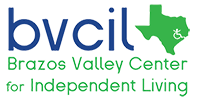Author: Andrew Morse, Special Project Coordinator at BVCIL

On October 22, 2014 the Bryan/ College Station Chamber of Commerce, in conjunction with HEB markets and the George Bush Presidential Library, held a question and answer forum with the candidates for local government offices and the candidates for state government offices. The event was hosted by the George Bush library and broadcast live on WTAW 1620 AM and filmed for later streaming by KBTX.
The format was question and answer and each candidate was given about one minute to respond. The topics ranged from classroom size in local schools to the question of water rights at the state level. All of the candidates appeared well prepared, sincere, and knowledgeable in their responses. The event itself was very efficiently run. There was very little lag between each question and answer session and the moderator did an excellent job at holding the candidates to their time limit.
Overall, this was a very informative and enjoyable event. The questions were relevant to each office and it seemed like the candidates had enough time to relay their basic message to the public. For anyone interested in politics, seeing it on the local level is much different than it is at the national level. I would recommend anyone interested in government or politics to attend next year’s forum.
To listen or watch the forum in its entirety, click the following link:
The following is a list of candidates that participated in the forum:
Bryan School Board Place
David Stasny (Incumbent)
Roy Flores
College Station School Board Place 6
Michael Schaffer
Kimberly McAdams (Incumbent)
State House of Representatives District 14
Andrew Metscher (Democrat)
Bruce Pugh (Libertarian)
State Senate
Joel Shapiro (Democrat)
Matt Whittingham (Libertarian)
College Station City Council Place 1
Blanche Brick (Incumbent)
Gabriel Pereira
College Station City Council Place 5
Linda Harvell
Julie Schultz (Incumbent)
Bryan City Council District 4
Mike Southerland
Kyle Incardona
Andrew Morse is our Special Projects Coordinator here at BVCIL. For more information on housing or questions about the above article, call us at 979-776-5505 and we’ll get you the information you are looking for.























